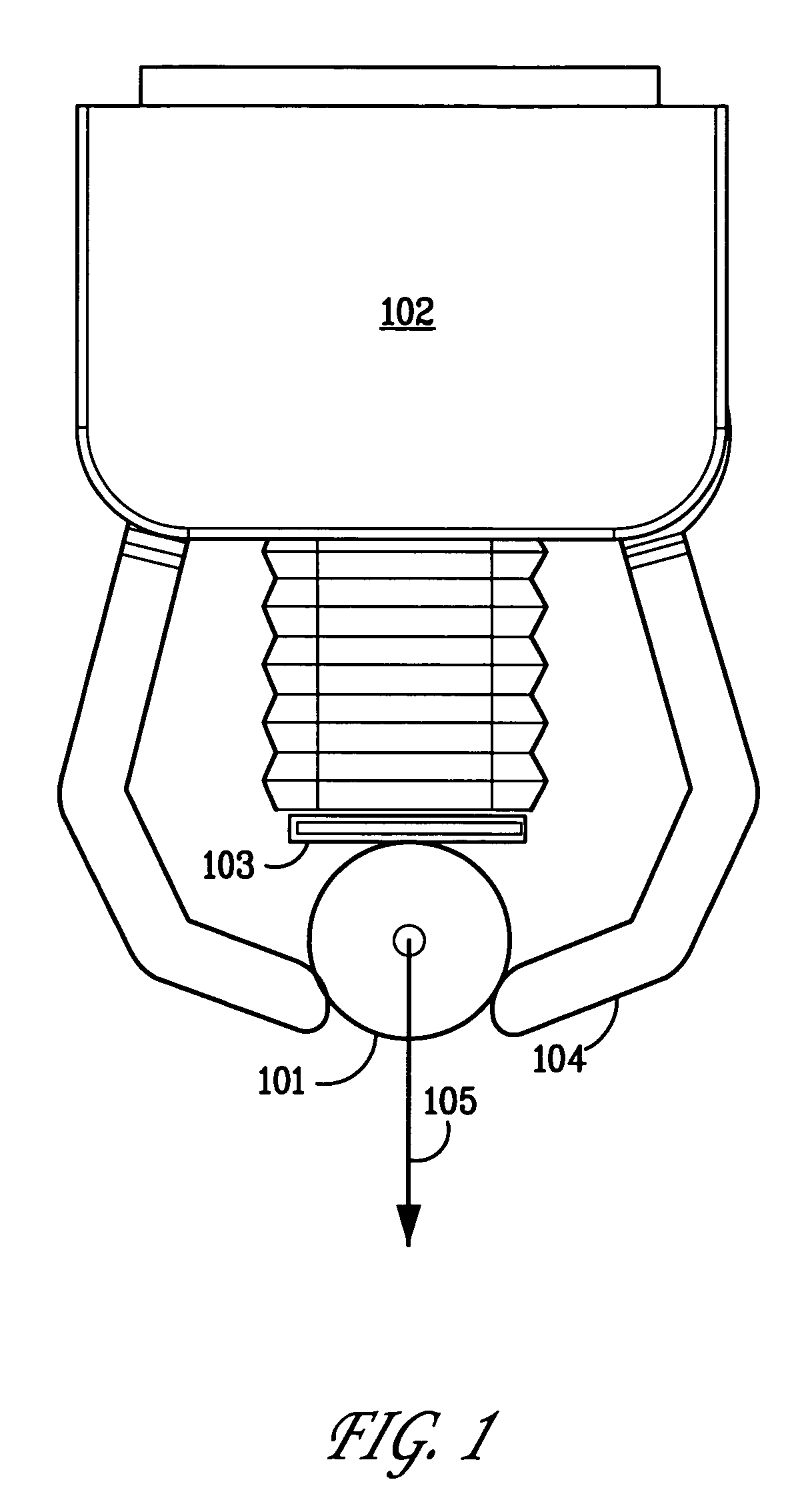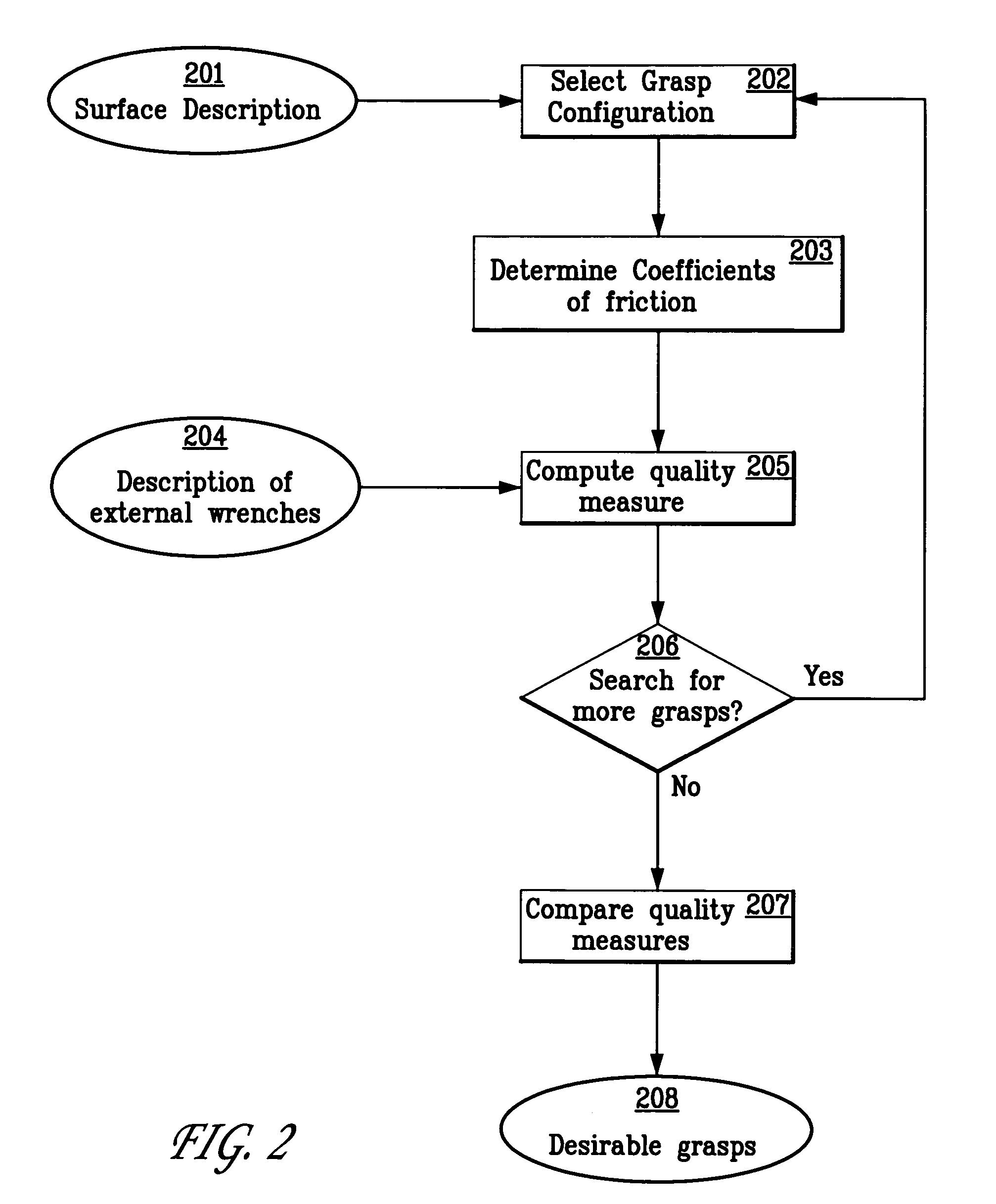System and method for computing grasps for a robotic hand with a palm
a robotic hand and palm technology, applied in the field of robotics, can solve the problems of insufficient restraining force, inability to plan a predetermined configuration, and almost impossible to hold up with a precision grasp
- Summary
- Abstract
- Description
- Claims
- Application Information
AI Technical Summary
Benefits of technology
Problems solved by technology
Method used
Image
Examples
first embodiment
1. Description of an Object's Surface
[0044] As above, a description of an object's surface is provided in step 201 of the method shown in FIG. 2. The object's surface may be described by a collection of surface patches, each of which is further described by a quadric function. The surface patches may be chosen so that, for any particular patch, there is a suitable patch coordinate system such that, in that coordinate system, the surface has the form {|εD} where D is the domain of the patch. The domain of the patch is bounded by a pair of bounds for its u and v extent; within these bounds, the area belonging to the domain is specified by a bitmap. This representation of the object surface creates a parameterization of the object's surface so that every point on the surface can be described by a patch index and two parameters. This makes it straightforward to use the four-dimensional configuration space for palm grasps. Additionally, this representation is computationally efficient ...
second embodiment
[0168] The first embodiment models the contact between the palm and the object by assuming that both are perfectly rigid. The second embodiment treats the case where the materials are not perfectly rigid and there is a limited amount of deformation. Specifically, the second embodiment models small linear deformations of the palm and assumes that the object is perfectly rigid. Alternative embodiments may model more complex cases, as described in the section on alternative embodiments.
[0169] The desirability of modeling limited deformation may be seen from the following example. Suppose the palm is in contact with a slightly curved surface, e.g. one where the radius of curvature is 500 mm. Assuming perfect rigidity, there is a single point contact. However, if the palm actually deforms by 2 mm, then the contact is distributed along an arc that is approximately 90 mm long, the actual extent depending on the plam size. This contact arc provides a wide base of support that may significa...
third embodiment
[0227] Computing the quality measure entails solving the force optimization problem, which is computationally expensive. As described above, it must be computed for many grasp configurations in order to find a desirable grasp—first in sampling on the grid and then in local optimization. Collectively, this is time-consuming. In many situations, it is useful to be able to compute a desirable grasp quickly and it is acceptable that reasonable approximations be made. In these situations, an approximation that can be quickly computed is appropriate.
[0228] The third embodiment is designed for these situations. In general terms, it employs the following idea. Let f(x) be a function of which a minimum value is sought. Suppose there is another function g(x) whose minimum value occurs at a value that is close to the value at which f(x) is minimal. That is, [0229] argmin(x) g(x)≈argmin(x) f(x)
[0230] Under these conditions, one can compute an approximation to the minimum value of f(x) by find...
PUM
 Login to View More
Login to View More Abstract
Description
Claims
Application Information
 Login to View More
Login to View More - R&D
- Intellectual Property
- Life Sciences
- Materials
- Tech Scout
- Unparalleled Data Quality
- Higher Quality Content
- 60% Fewer Hallucinations
Browse by: Latest US Patents, China's latest patents, Technical Efficacy Thesaurus, Application Domain, Technology Topic, Popular Technical Reports.
© 2025 PatSnap. All rights reserved.Legal|Privacy policy|Modern Slavery Act Transparency Statement|Sitemap|About US| Contact US: help@patsnap.com



